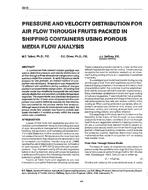Building energy consumption and water scarcity have become a major concern in Saudi Arabia. One-half of the total energy use is consumed by the residential building sector due to the inefficient constructed buildings and the hot-dry and hot-humid climates. Heating, ventilating, and air-conditioning (HVAC) systems consume a big energy portion due to cooling, filtering, and dehumidifying the air especially in a hot, humid climate. This air treatment process is associated with a considerable condensate water removal that typically ended to be in a sanitary drain. This paper presents the potential of energy and water sustainability by collecting condensate water from a residential HVAC cooling system in hot-humid climate of Jazan, Saudi Arabia. The collected water is re-used to wash dusty roof periodically and effectively reduce building energy consumption. Monthly condensate water for the case study is collected for the months of May, June, July and August, respectively. In addition, hourly dust fallout is predicted to calculate monthly dust accumulation. The building case study is modeled and simulated using eQuest 3.65, a building energy simulation program, to estimate energy consumption under the local dusty conditions.
Results show that the collected condensate water is 18.3 liter/ ton refrigeration /day and an averaged dust accumulation is 33.1 g/m2/month for the selected site. Based on the site climatic condition, dusty roof led to high building cooling consumption of 808.3 kWh/m²year. Finally, re-use condensate water to wash dusty roof could help reducing dust accumulation and sustain original roof solar reflectivity to reduce the annual building cooling consumption up to 19%.
Citation: Second International Conference on Energy and Indoor Environment for Hot Climates, Doha, Qatar, February 2017
Product Details
- Published:
- 2017
- Number of Pages:
- 7
- Units of Measure:
- Dual
- File Size:
- 1 file , 1.8 MB
- Product Code(s):
- D-HCC17-27


